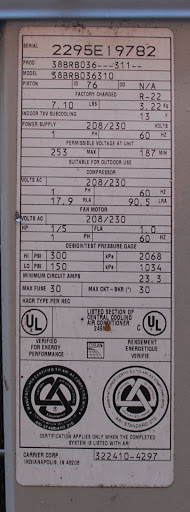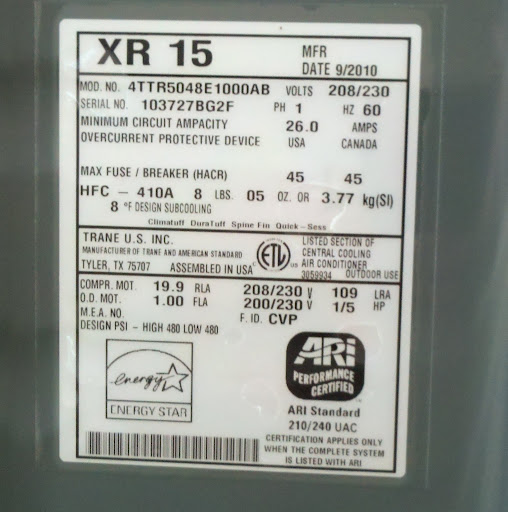Alwayslearningelec
Senior Member
- Location
- NJ
- Occupation
- Estimator
Is there a rough conversion when converting motor in tons to hp. Someone I work with said 1 ton equals about 1.5hp. THanks.


- One ton equates to 12,000 BTU/Hr
- One watt equates to 3.412 BTU/HR
- One horsepower equates to 746 watts
- Divide 12,000 by 3.412, and divide again by 746, and I get one ton equals 4.7 horsepower.
Do keep in mind that this is a pure unit conversion. If you are looking for the size(s) of the motor(s) that would be associated with a cooling system with a capacity of one ton, that is a different matter entirely.
Thanks Charlie . What do is the difference between the two?
The difference is the efficiency factor. With no losses the conversion factors would be true all the time.
If you know how many ton the unit is and what the efficiency is you should be able to get a lot closer with horsepower, remember that will be horsepower of the motor at full load rating.
When he says " size of motor associated with cooling system would be completely different" that's what I'm rferring to. Thanks
Are you talking about a compressor or a fan motor?
Horsegoer, regrettably there isn't an single answer to your question.Anyway, how do you figure/convert for a compressor and a motor?
Charlie is way ahead of me in intelligence, but the CONVERSION is about energy equivalence. When we run an HVAC system, whether cooling (one direction) or heat pump (both directions), we MOVE energy from one location to another. The power to do that varies with many things, one of which relates to source and sink temperatures, another to efficiencies. The SEER (Seasonal Energy Efficiency Ratio) makes lots of assumptions for these to come up with a number such that systems may be compared.When he says " size of motor associated with cooling system would be completely different" that's what I'm referring to. Thanks
